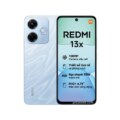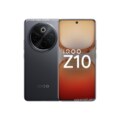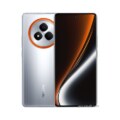- Latest Product
- Product
- Mobiles
- Rumor Mobiles
- Xiaomi Poco F7 Pro 5G
Xiaomi New Device
-->Xiaomi Poco F7 Pro 5G Full Details
Basic info
| Brand | Xiaomi |
| Model | Poco F7 Pro |
| Category | Mobile |
| Status | Rumor |
| Launch Announcement | Not announced yet |
| Launch Date | Not announced yet |
Network Connection
| Network Type | GSM / HSPA / LTE / 5G |
| 2G Network | |
| 3G Network | |
| 3G Bands | HSDPA 800 / 850 / 900 / 1700(AWS) / 2100 |
| 4G Network | |
| 4G Bands | LTE |
| 5G Network | |
| 5G Bands | SA/NSA |
| Speed | HSPA, LTE, 5G |
| GPRS GPRS (General Packet Radio Service) is a packet oriented mobile data service on the 2G and 3G cellular communication system's global system for mobile communications (GSM), Generally, GPRS is used for the purpose of wireless data transfer, such as sharing pictures and videos or browsing the Internet via a mobile phone connection. |
Body
| Dimensions | 160.3 x 75 x 8.1 mm (6.31 x 2.95 x 0.32 in) |
| Weight | 206 g (7.27 oz) |
| SIM Card | Nano-SIM + Nano-SIM |
| Colors | Black |
| Protection | Corning Gorilla Glass 7i |
| Features | IP68 dust tight and water resistant (immersible up to 2.5m for 30 min) |
Display
| Display Type Display Technology => A number of display technologies and types used in mobile phones => TFT (Thin Film Transistor), IPS (In-Place Switching), OLED (Organic Light Emitting Diode), AMOLED (Active-Matrix Organic Light-Emitting Diode), Super AMOLED (an even advanced version of AMOLED), Resistive Touchscreen (Resistive touchscreens contain two layer of conductive material with a very small gap between them which acts as a resistance), Capacitive Touchsceen (Capacitive touchscreen technology consists of a layer of glass coated with a transparent conductor) | OLED |
| Size | 6.67 inches |
| Ratio | 20:9 ratio |
| Resolution | 1440 x 3200 pixels |
| Pixel Density Pixel Density (PPI) is refers to the concentration of pixels on a particular display, measured in pixels per inch (ppi). Pixel density is calculated by dividing the diagonal pixel resolution of a display by its diagonal size, higher pixel density better display quality. | 526 ppi |
| Multitouch | |
| Display Protection | Corning Gorilla Glass 7i |
| Refresh Rate | 120Hz |
| Features | 68B colors, Dolby Vision, HDR10+, 1800 nits (HBM), 3200 nits (peak) |
Hardware
| CPU CPU (Central Processing Unit) mostly known as processors, CPU processes instructions in order to carry out certain functions that make your device operate properly. Processors are often described as the brain of computers, smartphones and tablets, Smartphones and tablets rely on processors to carry out their every task, Processors are an incredibly important factor in selecting any type of computing device, including your smartphone. | Octa-core (1x3.3 GHz Cortex-X4 & 3x3.2 GHz Cortex-A720 & 2x3.0 GHz Cortex-A720 & 2x2.3 GHz Cortex-A520) |
| GPU GPU (Graphics Processing Unit) is a single-chip processor designed to rapidly manipulate and alter memory to accelerate the creation of images in a frame buffer intended for output to a display, This includes things such as lighting effects, object transformations, and 3D motion. | Adreno 750 |
| Chipset Chipset is a group of integrated circuits designed to perform one or a more dedicated functions, often with real time computing constraints, Popular smartphones are equipped with more advanced embedded chipsets that can do many different tasks depending on their programming. | Qualcomm SM8650-AB Snapdragon 8 Gen 3 (4 nm) |
| RAM | 12/16GB |
| Internal Storage Internal Storage is a data storage space (flash memory) mostly used in smartphones, tablets and other electronic devices where operating system, apps, music, photos, videos, files and other user data Is stored. | 256/512GB/1TB |
| Memory Slot | NO |
| Version | 256GB/12GB RAM, 256GB/16GB RAM, 512GB/12GB RAM, 512GB/16GB RAM, 1TB/16GB RAM |
| Storage Type | UFS 4.0 |
Software
| Operating System OS => Every computer system run on a base software called Operating System (OS). Operating System controls all basic operations of the computer (such as smartphone, PDAs, tablet computers and other handheld devices). The Operating System allows the user to install and run third party applications (apps), apps are used to add new functionality to the device. | Android |
| Version | 15 |
| User Interface UI or user interface of a device is the look and feel of the on-screen menu system. How it works, its color scheme, how it responds to button presses, all of these things are part of the user interface. | HyperOS 2 |
Main Camera
| camera |
50 MP, f/1.6, 24mm (wide), 1/1.55", 1.0µm, dual pixel PDAF, OIS 8 MP, (ultrawide) |
| Features | Color spectrum sensor, LED flash, HDR, panorama |
| Video | 8K@24fps, 4K@24/30/60fps, 1080p@30/60/120/240/960fps, 720p@1920fps, gyro-EIS |
Selfie Camera
| camera | 20 MP, (wide) |
| Features | HDR, panorama |
| Video | 1080p@30/60fps, gyro-EIS |
Multimedia
| Loudspeaker | Yes, with stereo speakers |
| 3.5mm Jack |
Connectivity
| Wi-fi Wi-Fi is a popular wireless networking technology using radio waves to provide high-speed network connections that allows devices to communicate without cords or cables, Wi-Fi is increasingly becoming the preferred mode of internet connectivity all over the world. | Wi-Fi 802.11 a/b/g/n/ac/6e/7, dual-band, Wi-Fi Direct |
| Bluetooth Bluetooth is a wireless communications technology for exchanging data between mobile phones, headsets, computers and other network devices over short distances without wires, Bluetooth technology was primarily designed to support simple wireless networking of personal consumer devices. | 5.4, A2DP, LE, aptX HD, aptX Adaptive, aptX Lossless, LHDC 5 |
| Wi-fi Hotspot | |
| FM Radio | |
| USB | USB Type-C, OTG |
| OTG | |
| GPS | |
| NFC NFC (Near field communication) is a set of standards for smartphones and similar devices to establish peer-to-peer radio communications with each other by touching them together or bringing them into proximity, usually no more than a few inches. |
Security
| Fingerprint | Fingerprint (under display, ultrasonic) |
| Sensors Sensors are electronic components that detects and responds to some type of input from the physical environment. The specific input could be light, heat, motion, moisture, pressure and location, The output is generally a signal that is converted to use in computing systems, a location sensor, such as a GPS receiver is able to detect current location of your electronic device. | accelerometer, proximity, gyro, compass |
Power
| Battery Type | Si/C Li-Ion |
| Battery Capacity | 6550 mAh |
| Battery Charging |
90W wired, PD3.0, QC3+ |
| Fast charging | |
| Wireless Charging |
Price
Xiaomi Poco F7 Pro 5G official Pictures
Xiaomi Poco F7 Pro 5G review
With a planned release date of May 23, 2025, the Xiaomi Poco F7 Pro 5G is a much-anticipated addition to the mid-range smartphone market.
Several sources have offered information about its anticipated features and specifications, even though official details are still pending.
Xiaomi Poco F7 Pro 5G Design and Display
According to rumors, the Poco F7 Pro 5G will have a 6.78-inch AMOLED screen with a resolution of 1440 x 3200 pixels, producing images that are clear and colorful. A 120Hz refresh rate is anticipated to be supported by the display, guaranteeing fluid scrolling and an improved user experience. It might also have a maximum brightness of 6000 nits, which would improve visibility in a range of lighting scenarios.
Performance
The Qualcomm Snapdragon 8 Gen 3 processor, 12GB of RAM, and 256GB of internal storage are thought to be the device’s internal components. Strong performance should be provided by this setup, easily managing demanding applications and multitasking.
Camera System
It is expected that the Poco F7 Pro 5G will have a multipurpose triple-camera setup on the back, consisting of a 2MP macro lens, a 32MP ultra-wide lens, and a 50MP primary sensor. It is expected to have a 32MP front-facing camera for video calls and selfies. By accommodating different shooting situations, this combination seeks to give users a complete photography experience.
Battery Life
The device is said to be powered by a sizable 5500mAh battery that supports 150W fast charging. Rapid recharging would be possible with this feature, reducing downtime and enabling users to stay connected all day.
Software and Connectivity
Android 14 is anticipated to power the smartphone, providing the most recent software experience with the newest features and security patches. To ensure compatibility with a variety of networks and devices, connectivity options are likely to include 5G support, Wi-Fi, Bluetooth, NFC, and a USB Type-C port.
Conclusion
With a combination of premium features and specifications, the Xiaomi Poco F7 Pro 5G is looking like a strong option in the mid-range smartphone market. To verify these details and obtain a thorough grasp of the device’s capabilities, potential purchasers should wait for official announcements.
To see Xiaomi 15 ultra click here
To see the Galaxy S25 ultra click here.
To see the Samsung Galaxy S25 Plus click here.
To see Samsung Galaxy S25 Click here.













